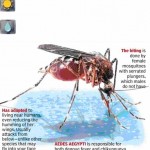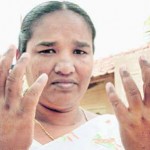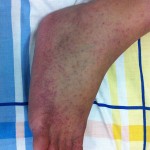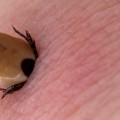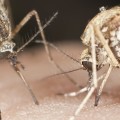
Chikungunya Virus Spreads to U.S.
Firstly, dying from a chikungunya infection is highly unlikely. Unfortunately, if you contract it, there is no cure other than time, and depending on your age and your luck it can take quite some time to be relieved of all the symptoms.
The virus was discovered in Africa sometime in 1952 between Mozambique and Tanzania. The term “chikungunya” is a Mokonde word which translates to “that which bends up,” referring to the contortions the human body makes due to the arthritis-like symptom that is the hallmark of the disease. The intensity of symptoms this virus possesses exist on a wide spectrum, meaning some people may never even realize they’ve contracted something while others can remain in debilitating pain for weeks or even years.
Because it wasn’t particularly lethal and was confined to areas in Africa and Asia, chikungunya wasn’t a priority to the Western medical establishment until about 2005, when Chikungunya first appeared on La Reunion. It was in that French-controlled island in the Indian ocean where 40% of the population was infected relatively suddenly. Since then, it has reached Australia, Taiwan, France, Italy, and then the Caribbean. The sudden spread is due to a mutation in the virus itself. By end of 2013, American tourists returning from the Caribbean had brought the virus with them. About seven months later, on July 17, 2014, the first locally acquired case of chikungunya was discovered in the US.
- Aedes aegypti
- A woman whose entire village was infected with chikungunya.
- A rash caused by the chikungunya virus.
Duration
Fever and flu-like symptoms typically exist for up to a week. Arthritis-like joint pain, oftentimes severe, typically persists for another 1-3 weeks, but the timeframe and intensity is highly inconsistent. The older the victim, the longer the duration tends to be, and in some cases the condition has persisted for years. Age tends to be a factor in the duration of the joint-pain stage of the infection, with older patients exhibiting the symptom much longer than younger patients. Up to 60% of people who contracted chikungunya while over the age of 45 reported joint pain after 3 years. Other symptoms may also continue to persist, typically for 3 weeks, such as headache and insomnia.
Symptoms
Other than fever and joint pain, patients often develop a rash. Many also have symptoms including headache, nausea, insomnia, vomiting, sensitivity to light, partial loss of taste, and conjunctivitis (inflammation and reddening of the eyes). It’s not uncommon for patients to exhibit swelling of the legs after a bout of chikungunya, and though the cause of which remains unknown, it doesn’t appear to be related to cardiovascular, renal, or hepatic abnormalities.
Prevention
Protect yourself from being bitten by mosquitoes, which act as carriers of the virus (especially Aedes aegypti and Aedes albopictus). The virus does not spread via person-to-person contact, but only when a mosquito that has fed on an infected person later feeds on an uninfected person. Click here to view one of our previous blog posts detailing how to best avoid mosquitoes. Any business or homeowner can contact Mosquito Squad to have up to 90% of mosquitoes and ticks eradicated from their property. Visit www.mosquitosquad.com to learn more.

